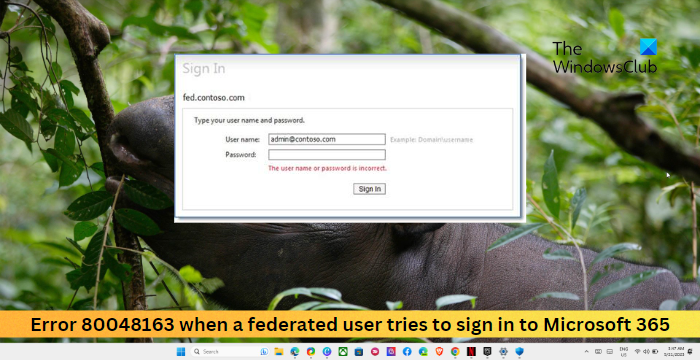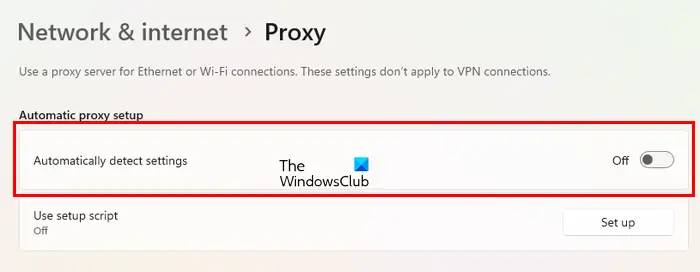This post features solutions to fix error 80048163 when a federated user tries to sign in to Microsoft 365. The error occurs if the authentication for the federated user is unsuccessful. The error message reads:
Sorry, but we’re having trouble signing you in
Please try again in a few minutes. If this doesn’t work, you might want to contact your admin and report the following error: 80048163
Fortunately, you can follow these suggestions to fix it.

Fix Error 80048163 when a federated user tries to sign in to Microsoft 365
To fix the error 80048163 when signing into Microsoft 365, verify federation configuration and disable LSA. Other than that, follow these suggestions:
- Verify Federation Configuration
- Disable Local Security Authority (LSA) credential caching
- Update the relying party trust with Azure AD
- Disable VPN/Proxy
Now let’s see these in detail.
1] Verify Federation Configuration
Start by checking if your organization’s federated domain settings are configured correctly. Double-check if the settings align with the requirements specified by Microsoft 365 and see if the error 80048163 gets fixed.
2] Disable Local Security Authority (LSA) credential caching
Disabling Active Directory credential info caching will update the LSA cache time-out setting. It may help fix the error 80048163 but add additional load on the server and Active Directory. Here’s how:
- Click on Start, type regedit and hit Enter.
- Once the Registry Editor opens, navigate to the following path:
HKEY_LOCAL_MACHINE\SYSTEM\CurrentControlSet\Control\Lsa
- Right-click on Lsa, select New and then click on DWORD Value.
- Type LsaLookupCacheMaxSize, and hit Enter to name the new value.
- Now, right-click on LsaLookupCacheMaxSize, and select Modify.
- Set the Value Data as 0 and click on Ok to save the changes.
- Once done, Restart your device and see if the Microsoft 365 sign-in error gets fixed.
3] Update the relying party trust with Azure AD
Next, try updating the party trust with Azure AD. Doing so can help fix the error 80048163 when a federated user tries signing in to Microsoft 365. Here’s how you can update the configuration of the federated domain on a domain-joined device with Azure Active Directory Module:
- Click on Start, search Windows Azure Active Directory, and click on Windows Azure Active Directory Module for Windows PowerShell.
- Type the following commands one by one and hit Enter:
$cred = get-credential Connect-MSOLService –credential:$cred Set-MSOLADFSContext –Computer: <AD FS 2.0 ServerName> Update-MSOLFederatedDomain –DomainName: <Federated Domain Name> Update-MSOLFederatedDomain –DomainName: <Federated Domain Name> –supportmultipledomain
- Once done, try logging into Microsoft 365 again.
4] Disable VPN/Proxy

Lastly, disable VPN or Proxy if you’re using one to fix the error. This is because error 80048163 can occur if you are connected to a VPN/Proxy server. These hide the IP address by rerouting Internet traffic via a remote server. Nevertheless, here is how you can disable it:
- Press the Windows key + I to open Settings.
- Navigate to Network & Internet > Proxy.
- Here, toggle off the Automatically detect settings option.
- Click on the Set up option next to Use a proxy server and toggle off the Use a proxy server option.
Read: Fix 30015-4 (5), 0x4004f00d, 30175-11, Access denied to installation source, Office error
We hope this helped you.
What is federated identity in Office 365?
Federated Identity in Office 365 is an authentication method that allows users to use the Office servers using organizational credentials. This will help users leverage their existing credentials from their organization’s identity provider (IdP) to access the services.
What is error code 30183 2016 403 when installing Office 365?
To fix the error code 30183 2016 403 when installing Office 365, check Office servers and your account credentials. If that doesn’t help, try installing Office in Clean boot mode.